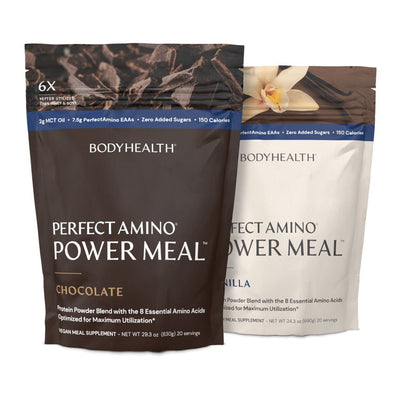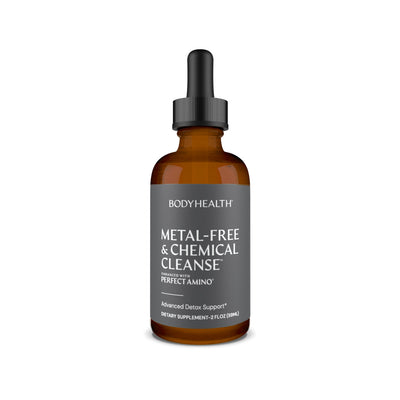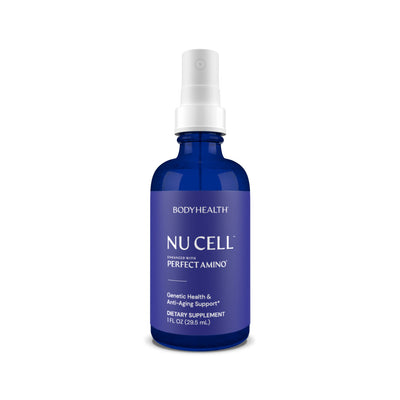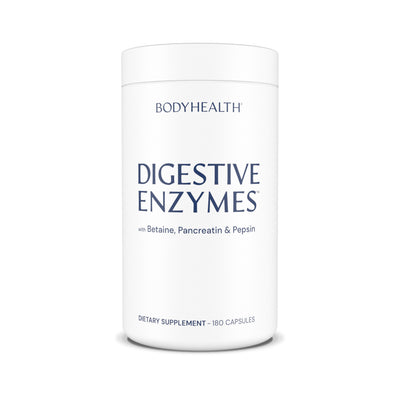You Don't Need Protein — You Need Amino Acids
May 18, 2025 4 min read

For the last few years a sort of battle has existed regarding protein.
Is meat or vegan protein better?
How much protein should I take? Is it too little or too much? Do people in general need more protein or less protein?
Beyond that, some say that meat proteins cause an inflammatory response in the body so we should get protein from plants.
Others say we need more animal protein, that it’s a superior protein source and provides key nutrients not available in plant proteins.
Some say too much protein is toxic and others say too little protein impacts our hormones, muscle, bones, mood, and immune system.
So how do we answer this?
Well, we don’t.
Because we’re asking the wrong questions.
And the reason we’re asking the wrong questions is because we’re starting from the wrong point of data.
Our body doesn’t need “protein” as such, it needs the amino acids protein provides.
The only point of eating protein is to get to the amino acids the protein is made of which our body then uses to build completely new proteins in the forms the human body needs.
But different proteins have different amounts of different amino acids. Some we need, and some we don’t.
And when we get too little of the amino acids we need and too much of the ones we don’t, we have problems.
But let’s back up. Because this needs a little explaining. Then we’ll circle back around.
HOW PROTEIN AND AMINO ACIDS WORK IN THE BODY
The entire structure of our body is made of proteins. Our muscle, our skin (collagen is a protein), our bones, ligaments, and tendons. Every cell in our body.
Our hormones are made from proteins. Our immune cells and digestive enzymes, even our neurotransmitters and nerve cells.
And enzymes, the chemicals that cause the reactions in our body that allow our body to function at all?
These are all made of proteins.
Or, more specifically, they’re made of amino acids. Because all a protein is, is a specific combination of amino acids.
How do we get amino acids? By eating protein.
A protein is just a long chain of amino acids all bonded together.
When we eat protein, the acid in our stomach, and other chemicals in our small intestine, break the bonds holding these amino acids together.
These individual amino acids are then absorbed through the wall of our small intestine and go into our bloodstream.
From here they’re sent throughout our body to different organs and cells to make each of the different proteins needed.
But there’s something else. And this is the missing piece.
DIFFERENT PROTEINS HAVE DIFFERENT AMINO ACIDS LEADING TO DIFFERENT RESULTS
Any animal’s body is set up in a specific way. And its proteins are formed from amino acids in a specific way that is right for that animal.
And a plant, of any sort, is set up in its specific way, and the proteins it contains are combinations of amino acids in the ways needed by that plant.
So the combinations of amino acids that make up the proteins in these animals or plants are completely different from each other.
But none of them are the combinations that make up the proteins in the human body.
The human body is its own system.
It needs certain amino acids, the essential amino acids, and it needs each one in a specific amount in relation to the others, a specific ratio.
When it receives all of the essential amino acids it needs, in the correct ratio needed, from any source, it can then use all of them to make new proteins and collagen in the forms the human body needs them in.
But when it receives any one or more of the essential amino acids in an amount above the ratio needed, or when it receives non-essential amino acids, it can’t use them.
Instead, they’re broken down in the liver, releasing nitrogen waste that must be removed by our kidneys, and are either converted to glucose (sugar), or body fat, or burned as fuel.
This is why some people gain excess body fat when eating high amounts of certain proteins. Much of the amino acids in the protein they’re consuming are not needed by the human body and so are converted to sugar or body fat — calories.
So when we eat different proteins, we have a variable depending on which one we ate.
And that is the missing piece.
And why we don’t care about proteins.
Because our body doesn’t need protein. It needs amino acids.
So the question then isn’t which protein is best? It’s which amino acids does the human body need, and in which amounts?
And, then, where can we get these?
THE PRECISE RATIO OF AMINO ACIDS NEEDED BY THE HUMAN BODY
PerfectAmino is pure essential amino acids in the exact amounts needed by the human body so that they’ll be both fully used, and so that there is no excess of amino acids to be converted to sugar or body fat.
Even more, they’re in a form that requires almost no digestion.
Remember, when we eat proteins, they have to be broken down. If we have a poor digestive system we can’t do this fully. So we lose needed amino acids solely because they weren’t broken down.
With PerfectAmino, as it requires almost no break down, you receive all or almost all of these needed amino acids.
And it’s fully absorbed in an average of about 23 minutes, instead of the hours that normal proteins require.
This allows us to build lean muscle faster, recover faster, and have greater endurance during a workout or exercise when taking PerfectAmino beforehand.
We receive more of the amino acids we need for bones, tendons and ligaments, for immune cells and hormones, enzymes and neurotransmitters.
And we do so all without the caloric impact caused by excess amino acids in other protein sources.
Here you can learn more about all the areas of health and fitness PerfectAmino affects.
And our PerfectAmino Usage Guide goes into how much PerfectAmino to take and when so you can get the best results possible.
We'll get more into the difference between plant and animal proteins in the next article, as well as when too much protein is actually too much, and why.
I hope this helps.
Articles by Health Topic
Your Path To Better Health Starts Here!
From in-depth articles on nutritional benefits to updates on new product launches, stay informed and inspired on your journey to optimal health.
*These statements have not been evaluated by the Food and Drug Administration. These products are not intended to diagnose, treat, cure, or prevent any disease.

















